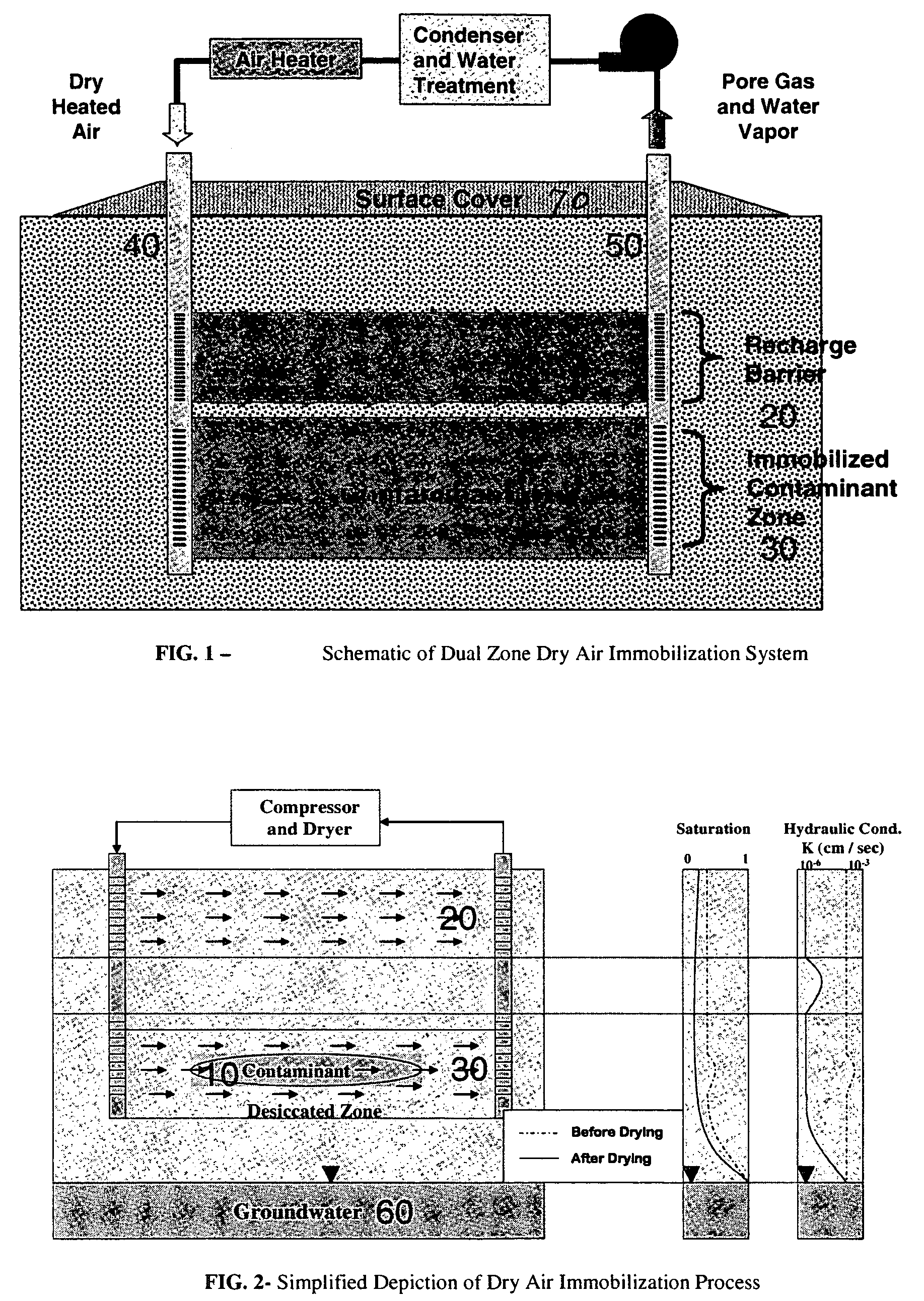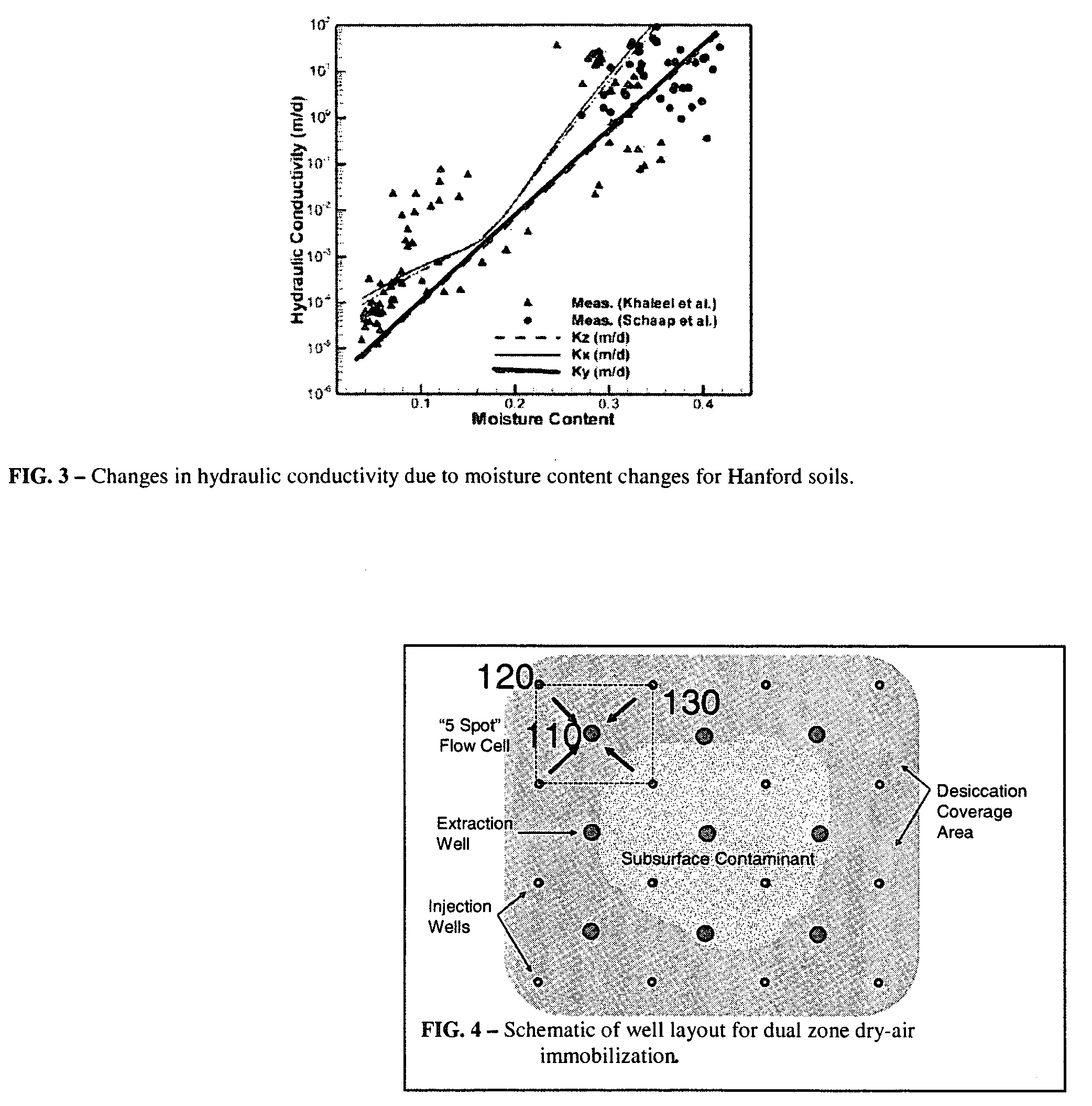In situ immobilization of subsurface contamination
a technology of immobilization and subsurface contamination, applied in nuclear engineering, radioactive decontamination, transportation and packaging, etc., can solve the problems of single-layer desiccation approach described and raimondi has never been implemented, and achieve the effect of reducing groundwater contamination
- Summary
- Abstract
- Description
- Claims
- Application Information
AI Technical Summary
Benefits of technology
Problems solved by technology
Method used
Image
Examples
Embodiment Construction
[0023]The present invention prevents the vertical migration of vadose zone contamination whatever the form (organics, metals, and radionuclides such as Tc99) from migrating down to the groundwater table by trapping the contaminants within their current location, and thus delaying or eliminating their arrival at the water table. While the method and apparatus of the present invention is motivated by the contamination problem at the Hanford Site, it is by no means limited to this site or this application, and is intended to address any type of contamination in the vadose zone at any site.
[0024]With reference to FIGS. 1 and 2, the DAIS uses dry-air desiccation to immobilize radionuclides and other contaminants, 10, preventing them from reaching the water table. As illustrated in FIGS. 1 and 2, the preferred embodiment of the present invention uses two dry subsurface zones, 20 and 30, both of which work much like a sponge. The upper dry layer, 20, captures any natural recharge and elimi...
PUM
 Login to View More
Login to View More Abstract
Description
Claims
Application Information
 Login to View More
Login to View More - R&D
- Intellectual Property
- Life Sciences
- Materials
- Tech Scout
- Unparalleled Data Quality
- Higher Quality Content
- 60% Fewer Hallucinations
Browse by: Latest US Patents, China's latest patents, Technical Efficacy Thesaurus, Application Domain, Technology Topic, Popular Technical Reports.
© 2025 PatSnap. All rights reserved.Legal|Privacy policy|Modern Slavery Act Transparency Statement|Sitemap|About US| Contact US: help@patsnap.com



